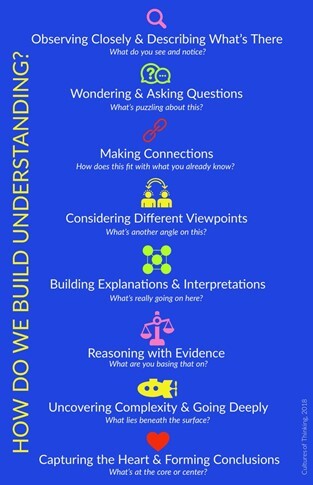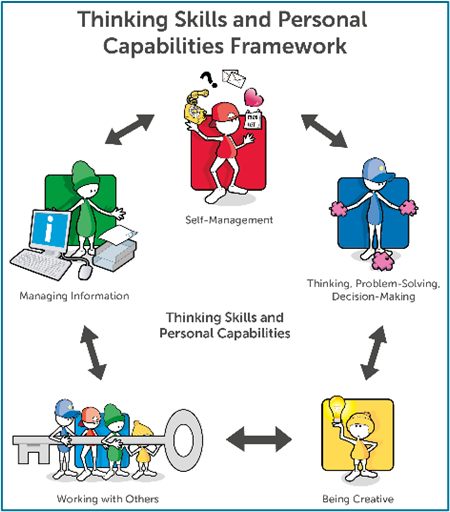The Power of Making Thinking Visible - A Book Review
By Paul Tyack, Thinking Matters Consultant
Nine years after the highly acclaimed and ground-breaking Making Thinking Visible (2011), ‘The Power of Making Thinking Visible’ was finally published this summer. Ron Ritchhart, Senior Research Associate of Harvard Project Zero and Mark Church, Consultant at Project Zero, expand on the work of the original book by providing tools, principles and practices based on research and work with teachers and students around the world.
The book’s headline story is that it introduces 18 new thinking routines to the Making Thinking Visible toolbox. The way in which these routines are introduced as either ‘For engaging with others’ , ‘For engaging with ideas’ or ‘For engaging in action’ gives clarity about the collaborative, constructive and dynamic nature of thinking and learning, one of the core foundations of all Project Zero’s work. An investigation of these routines will surely bring out different highlights and flexible possibilities for adaptation and application for all teachers. ‘Peeling the fruit’, ‘The 3 Ys’ ‘The Story Routine’ and ‘The Ladder of feedback’ are personal favourites.
However, what really got me thinking was the way Ritchhart and Church thoughtfully frame the routines as one ingredient, rather than as a starting and finishing point. They are careful to tackle misconceptions in explaining that Making Thinking Visible is neither a program, intervention or framework that can be implemented. It is better viewed as firstly a goal of teaching and secondly as a set of four inter-related practices which help us achieve that goal – Listening, Documentation, Questioning and Routines themselves.

The authors explain how it is common for teachers to approach the routines thinking ‘how can I use these routines in my lessons?’, where it is far preferable to consider, ‘how can I make Thinking routine in this class?’ and subsequently ‘which kinds of thinking do I want to make routine?’ Here they introduce The Understanding Map which contains 8 specific thinking moves they identify as necessary for building understanding, (Observing, Wondering, Making Connections, Exploring Viewpoints, Building Explanations and Interpretations, Reasoning with Evidence, Uncovering Complexity and Going Deeper, Capturing the heart and Forming Conclusions). This Understanding Map is the recommended starting point for teachers when planning which type of thinking are they aiming for students to be doing with and about the content. Once this is identified, appropriate routines can be selected. The book provides evidence and case studies of the profound impact of regularly having students engage in thoughtfully selected routines, together with teacher monitoring and scaffolding considerations.
As with all of Ron Ritchhart’s work, the book really dives beneath the surface of the teaching and learning processes and Chapter 6 in particular introduces and unpacks important principles and practices to consider when planning, priming, pressing and positioning for thinking. A key take-away I have been reflecting on is the idea that a tool set, such as the routines, is underpinned by a skill set which enables us to leverage and utilise the tools effectively. This in turn is underpinned by our mind set and the core beliefs and action theories we have about teaching and learning.
If you are interested in how Making Thinking Visible can foster deep learning, cultivate engaged students, change the role of students & teachers, enhance formative assessment, improve attainment outcomes and develop thinking dispositions, I would thoroughly recommend this book. Having read the original will no doubt enrich your understanding, but is not a necessary prerequisite due to the thoughtful reflection and innovative practice this book is likely to inspire.
To find out more about Making Thinking Visible:
http://www.pz.harvard.edu/projects/visible-thinking
Paul Tyack
Thinking Matters Consultant



